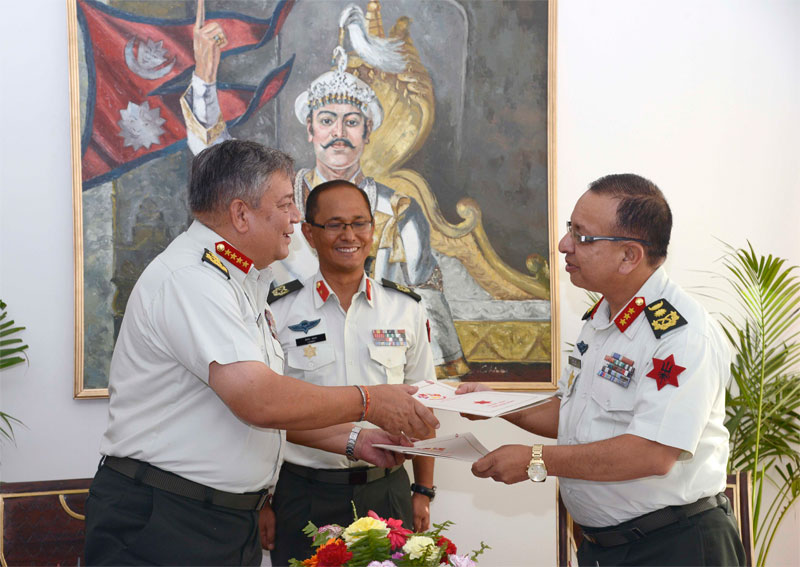Tough challenges ahead for new NA chief Chhetri
Kathmandu, September 9
General Rajendra Chhetri is all set to succeed Chief of Army Staff Gaurav SJB Rana on Thursday. Chhetri has taken charge of the 93,000 strong Nepal Army since Gen Rana went on a customary month-long leave on August 10.
Right after his succession, Chhetri would face daunting challenges in reorienting and revamping the two-and-a-half century old institution.
Geja Sharma Wagle, a security analyst, says Chhetri’s tenure would be more challenging than his predecessors. “He had to deploy army [in parts of Tarai] even before becoming a full-fledged army chief,” Wagle observed.
Playing a supportive role in the political transition, reconstructing quake damaged infrastructures, framing a national security policy and restructuring the NA are among the key tasks that Gen Chettri would have to brace for immediately after he takes charge as the new army chief.
His recent predecessors --Rukmangad Katawal, Chhatra Man Singh Gurung and Rana -- focused more on transitory tasks, except integration of the Maoist combatants. They skipped the issue of formulating national security policy and NA restructuring in absence of a permanent constitution.
However, the new army chief wouldn’t have that convenience. Now, the statute making is in its final stage and right after its promulgation the NA would have to work with Parliament, political leadership and policy planners to formulate a comprehensive national security policy and restructure the army accordingly.
“The shape and outlook of the NA in future would depend on how the army headquarters works with the Singha Durbar and Parliament,” said retired Lt Gen Balananda Sharma.
Gen Chhetri also seems aware of the challenges ahead. “The Nepali Army is quite aware its responsibility,” he told The Himalayan Times. “We will work with Parliament and the government to redesign NA’s structure and frame a national security policy accordingly.”
He said the strength of the national army might not remain the same under the federal setup. “NA’s focus would be on “right-sizing” the force,” he said.
In recent years, NA had begun ‘bunker-to-barracks’ policy to relocate troops from under-ground bunkers to buildings.
After the April 25 earthquake damaged over 30 percent of its barracks, many soldiers have been forced to live in tents and return to bunkers. Chhetri has to take a lead in relocating them from tents and bunkers to resilience barracks.
The government has yet to formally seek the army’s help for post-quake reconstruction. But, the NA is the only proven national institution that can perform the task in remote locations. If the government formally seeks army’s help, the new leadership will have to fulfill that responsibility as well.
Bidding farewell to Rana on Monday, Chhetri said he would give continuity to positive initiatives taken by his predecessor, such as the 10-year plan to modernise the national force.
Nevertheless, many view he would have to correct some policy decisions taken by Rana, such as fast-track promotion of NA personnel, which drew flak from within and outside the NA.
Born in 1960 in Tanahun, Chhetri joined the NA in 1977 as a second lieutenant. During his 37-year military career, he worked intensively both during peace and conflict at home and abroad. Many consider him a good military strategist. But now all eyes are on him on how he leads the national army and tackles the tremendous challenges of NA restructuring as soon as he assumes office.






